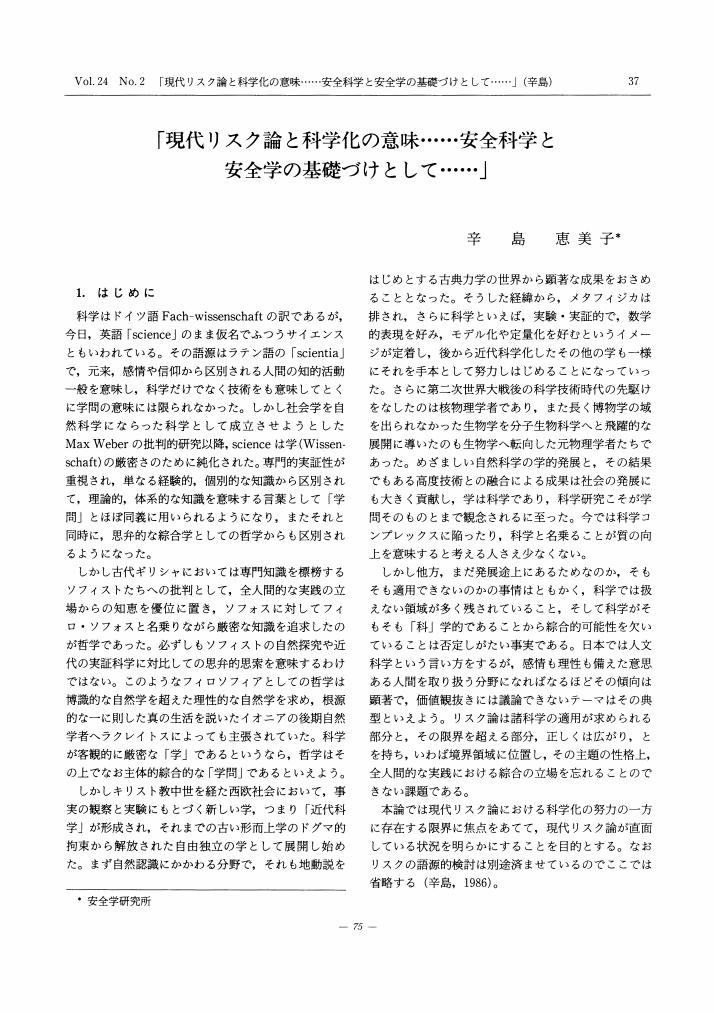24 0 0 0 OA 1950∼1960年代の東海道新幹線車軸の開発とリスク・マネジメント
- 著者
- 辛島 恵美子
- 出版者
- 公益社団法人 日本金属学会
- 雑誌
- 日本金属学会誌 (ISSN:00214876)
- 巻号頁・発行日
- vol.66, no.12, pp.1236-1245, 2002 (Released:2008-04-24)
- 参考文献数
- 27
The Shinkansen Line has experienced no serious car-accidents since its operation start in 1964. Why has the Shinkansen Line been able to keep such a good safety performance? This paper intends to clarify the background and the reasons why those miracles became possible—when, what kinds of risks and what kinds of actions the staff of the Japanese National Railways took in, who participated in the development of the Tokaido Shinkansen railway-axles in 1950s∼1960s as a designer, an investigator, a maintenance engineer, an inspector, or a top executive in technology. I discovered all the staff had been dedicated to their duties and their actions were prudent enough in general. As a result their behaviors have reduced the riskiness of their works objectively. But the most of the staff were not so much sensitive to risk itself as a few technical top executives of JNR. For example when the inspectors first found unexpected micro cracks on the 20% running axles in 1965, the top executives adapted a new management system in 1966 based on those inspections, which contained a systematic long-range R&D plan of high-quality railway-axles as well as an effective risk management for micro cracks.
3 0 0 0 OA 「現代リスク論と科学化の意味……安全科学と安全学の基礎づけとして……」
- 著者
- 辛島 恵美子
- 出版者
- 科学基礎論学会
- 雑誌
- 科学基礎論研究 (ISSN:00227668)
- 巻号頁・発行日
- vol.24, no.2, pp.75-81, 1997-03-31 (Released:2010-01-20)
- 参考文献数
- 10
